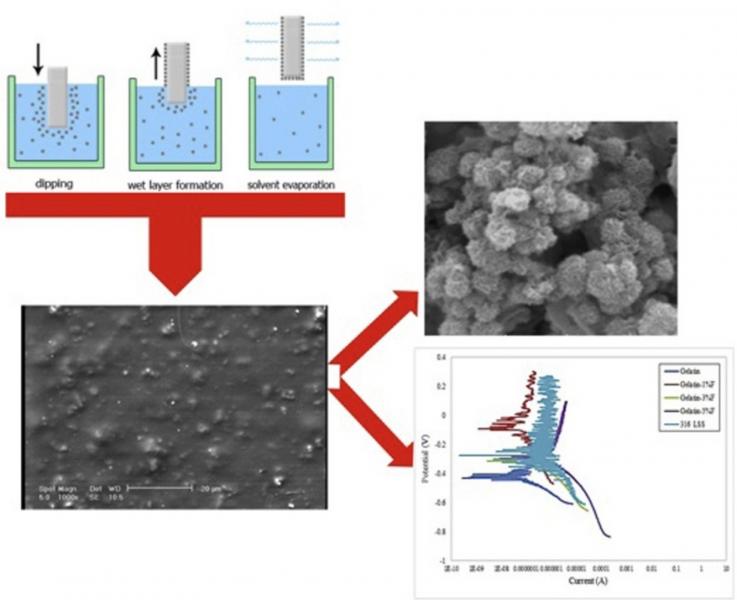- English
- فارسی
2012-Torkaman.R.
 |
 |
Reza Torkaman
- BSc, (2012-2016): Fabrication and Characterization of gelatin-forsterite coating on 316L stainless steel via dip coating process
Abstract:
AISI 316L stainless steel has been widely considered as implant materials in biomedical applications owing to its low cost and superior strength. However, its weak corrosion resistance due to the release of nickel, chromate and molybdenum ions as well as its inert nature limits its clinical application specifically long-standing performances. The aim of this study was to prepare and characterize gelatin-forsterite (Mg2SiO4) nanocomposite coatings consisting of various amounts of forsterite nanopowder (0, 1, 2.5 and 5 wt.%) on AISI 316L substrate in order to improve simultaneously corrosion resistance and in vitro bioactivity. Nanocomposite gelatin-forsterite coatings were characterized by Fourier transform infrared spectroscopy, scanning electron microscopy and X-ray diffraction. Furthermore, the bioactivity of gelatin-forsterite coated specimens were evaluated via soaking in simulated body fluid (SBF) for 28 days at 37 °C. Results demonstrated the formation of crack-free and homogeneous coatings without any observable defect and pore. The surface roughness and adhesion strength of the coatings enhanced with increasing forsterite content. Moreover, the corrosion evaluation considered by potentiodynamic polarization and electrochemical impedance spectroscopy (EIS) demonstrated that compered to unmodified AISI 316L substrate, the corrosion resistance of gelatin-forsterite nanocomposite-coated substrates significantly improved. Moreover, nanocomposite coatings were able to persist severe localized corrosion in physiological solution indicating their long-term biostability. Moreover, the formation of bone-like apatite layer on the nanocomposite-coated samples was observed in SBF, which might be helpful to integrate with host tissue. Overall, it is anticipated that the novel proposed nanocomposite coatings of gelatin-forsterite might be potentially useful for orthopedic implants.
Outcome: Paper


